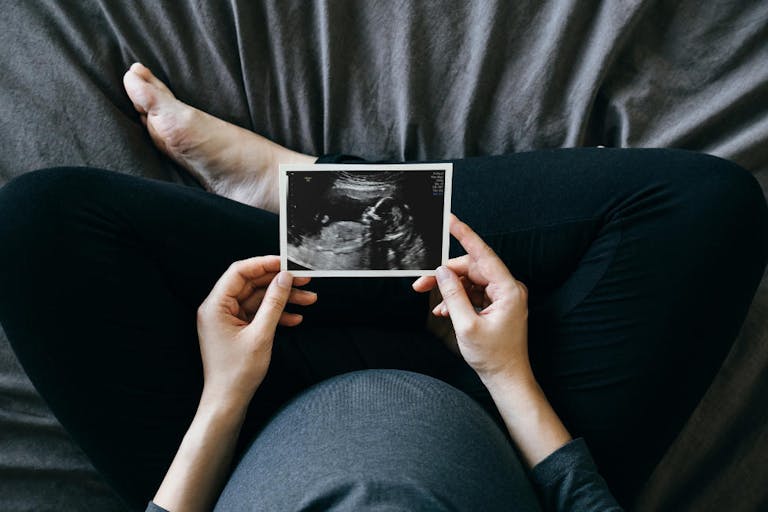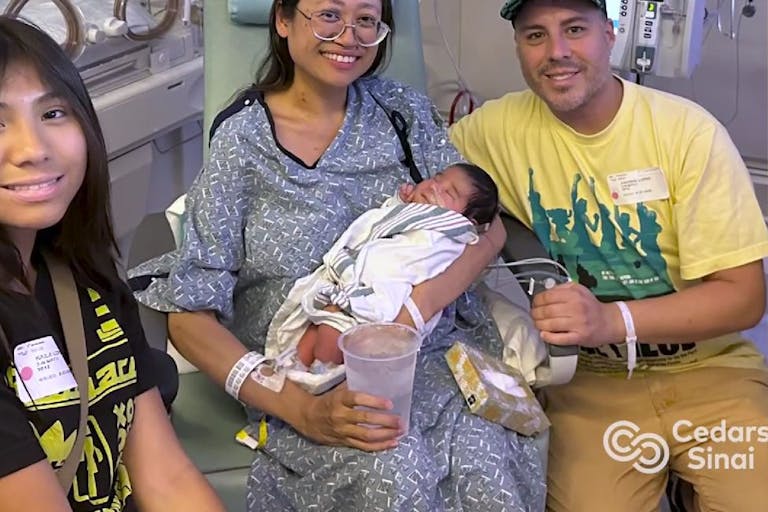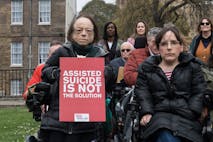Dr. Monique Chireau: Abortion does not reduce maternal mortality

What women need is better access to maternity care, not abortion
What women need is better access to maternity care, not abortion
With the fall of Roe v. Wade, abortion advocates have bemoaned the supposed lack of abortion access across the country, insisting it means women are at danger. Yet while maternal mortality is a real issue in the United States, the answer isn’t abortion — it’s ensuring that women have better access to maternity health care.
Abortion deserts
OB/GYN residency has remained competitive, but there were slightly fewer applications in pro-life states. Lucy Brown, a medical student at Indiana University, told ABC News that pro-abortion states were at the top of her list. “I really, really wanted to stay in the Midwest. I wanted to be close to my family, but it kind of conflicted with my No. 1 priority,” she said, adding that she couldn’t see herself moving back to Indiana once her residency is completed.
“I would find it very, very, very difficult to go back, as much as I want to. It would be really a tragedy for me to not be able to provide the full scope of reproductive care and have to go day by day and send people up to Chicago, or wherever, and not be able to do it myself,” Brown said. “My goal was to end up in Indiana, or at least around Indiana, but I don’t know if that’s going to be a safe or realistic option anymore.”
Adriana Traub, a medical student at Emory University in Georgia, echoed similar sentiments. “Personally, I want to receive an education, if I go into OB-GYN, where I can learn how to provide abortion care services, and be able to also provide all options to my patients without being worried about losing my medical license — without being worried about having to tell a patient ‘no,'” she said. She reiterated that pro-life laws made her want to become an OB/GYN even more. “There is such a great need for it,” she added.
Areas where there aren’t many abortion facilities have been dubbed “abortion deserts,” meaning women have to travel 100 miles or more to get an abortion. And numerous abortion advocates claim that a lack of access to abortion will increase maternal mortality rates… and that women need abortion for their own reasons.
Maternity care deserts
Yet the larger issue is not abortion; abortion does not lower maternal mortality rates. Across the globe, statistics have found that legalized abortion has no positive impact on maternal mortality, and in some cases, even makes it worse.
In recent months, news outlets have tried to blame pro-life laws for things like hospital closures. Pro-abortion writer Danielle Campoamor insinuated in a piece for TODAY that an Idaho maternity ward closure was linked to the state’s pro-life laws… though the hospital’s statement made it clear that the real reason was low patient volume, which meant they couldn’t attract permanent pediatricians.
And when it comes to lifesaving care, women don’t need more abortionists — they need more access to maternity care, something that is dwindling across the country. A 2022 report from the March of Dimes found that 36% of all counties are considered maternity care deserts, and “access to maternity care is diminishing in places where it’s needed most, impacting nearly seven million American women of childbearing age and roughly 500,000 babies.”
A 2023 article published in the JAMA Health Forum also noted the issue of maternity deserts, and gave a list of policy recommendations. None of them involved abortion; instead, they recommended investing more into growing the workforce, building more community-based services, and ensuring there is adequate health coverage for births.
Dr. Elizabeth Cherot, chief medical officer for the March of Dimes, told ABC News last month that the issue of maternity deserts is contributing to the high maternal mortality rate in the United States.
Article continues below
Dear Reader,
Have you ever wanted to share the miracle of human development with little ones? Live Action is proud to present the "Baby Olivia" board book, which presents the content of Live Action's "Baby Olivia" fetal development video in a fun, new format. It's perfect for helping little minds understand the complex and beautiful process of human development in the womb.
Receive our brand new Baby Olivia board book when you give a one-time gift of $30 or more (or begin a new monthly gift of $15 or more).
Rachael Morris, a maternal fetal medicine specialist at the University of Mississippi Medical Center, also explained that her team is working to address the issue by training first responders on how to handle pregnancy-related emergencies. “We teach you how to intubate a baby. We teach you how to deliver a baby,” she said, adding that 90% of maternal mortalities over the past two years were preventable. “It’s frightening. Something’s got to change.”
Dr. Monique Chireau Wubbenhorst, Assistant Professor of Obstetrics and Gynecology at Duke University Medical Center, recently testified before a Senate committee, stating that “The solution to maternal mortality — and I’ve been working in this area globally and in the United States for many years — is to improve health care, health education, and to increase support to pregnant women. Abortion does nothing to address any of those issues.” She added that the “main causes of maternal mortality… are deaths from cardiovascular causes, infection, and embolism and so on and so forth. Abortion will not reduce those deaths.”
One man suffered the loss of his pregnant wife and their preborn child because they couldn’t make it to the hospital in time. “We don’t have a hospital,” Byron Stribling said. “We don’t have an emergency room. The nearest hospital was about 15, 20 miles away, give or take.”
And meanwhile, across the country, maternity care units in rural communities continue to close. The reason most often has nothing to do with abortion. Childbirth is not a high-paying asset to the medical system, especially not in low-income communities. So even though good maternity care is needed, money is being prioritized over women’s lives.
“There will be lives lost — people need to know that,” Leslie Swan, a Native American doula, told the New York Times.
Women of color are also more likely to live in a maternity desert, and less than half of women in rural areas live within 30 miles of available perinatal care.
Shayla Owen, 35, told the New York Times she had to drive 70 miles across a desolate mountain pass in order to reach a hospital in Yakima when she went into labor; by the time they arrived, they were almost out of gas. “I hemorrhaged after the delivery,” she said. “So I was glad I was at a hospital.”
Induced abortion — the direct and intentional killing of a preborn baby — is not health care, and it is not medically necessary. What women need isn’t abortion; they need legitimate health care.
Live Action News is pro-life news and commentary from a pro-life perspective.
Contact editor@liveaction.org for questions, corrections, or if you are seeking permission to reprint any Live Action News content.
Guest Articles: To submit a guest article to Live Action News, email editor@liveaction.org with an attached Word document of 800-1000 words. Please also attach any photos relevant to your submission if applicable. If your submission is accepted for publication, you will be notified within three weeks. Guest articles are not compensated (see our Open License Agreement). Thank you for your interest in Live Action News!
Read Next

Full term 'miracle' baby born after 'unprecedented' ectopic pregnancy
Bridget Sielicki
·More In Analysis

Analysis
Disability rights groups file lawsuit to stop Delaware assisted suicide law
Angeline Tan
·
Analysis
Woman intentionally hit pro-life activist with her SUV at Planned Parenthood
Cassy Cooke
·
Politics
Arizona pro-life agenda undeterred by pushback and an ongoing lawsuit
Madison Evans
·
Opinion
Can IVF ever be ethical? Here are some things to consider.
Nancy Flanders
·
Investigative
Pro-abortion Guttmacher's 'policy solutions' prove they see parents as an enemy
Carole Novielli
·More From Cassy Cooke

Analysis
Woman intentionally hit pro-life activist with her SUV at Planned Parenthood
Cassy Cooke
·
International
Woman recounts grandmother's euthanasia: 'She thought she was a burden'
Cassy Cooke
·
International
Leaked documents suggest UK Labour Party is source of assisted suicide bill
Cassy Cooke
·
Politics
Court again rewrites Missouri ballot question to repeal state 'right' to abortion
Cassy Cooke
·
Pop Culture
NFL superstar Jason Kelce and wife Kylie open up about miscarriage
Cassy Cooke
·